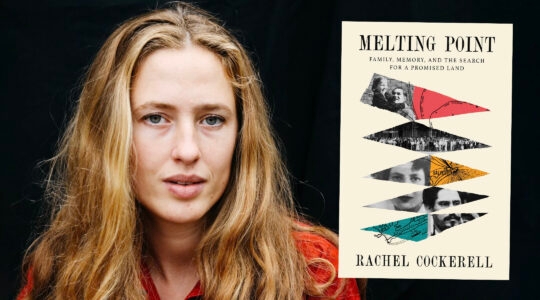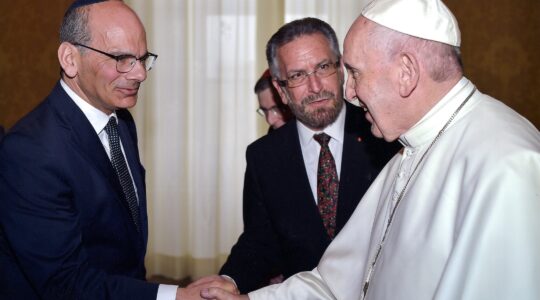I had the privilege of being one of 120 participants at a unique conference that took place in mid-May. Siach (conversation) was a gathering of Jewish social justice and environment professionals from Israel, Europe and the United States.
Funded by the Commission of the Jewish People of the UJA-Federation of New York, the gathering was coordinated by three organizations: Bema’aglei Tzedek (Israel), Jewish Social Action Forum (U.K.) and Hazon (U.S.).
I knew a good many of my Jewish colleagues from the U.S. but only a handful of those from Israel and Europe. It was a most remarkable gathering of committed social activists. It included Jewish activists working on every social and political issue imaginable — human rights, poverty, environmental degradation, LGBT issues, consumerism, international development, relief and more.
To the extent that part of the agenda for the conference was to strengthen bonds between three disparate centers of Jewish life, the objective was achieved. The gathering was not, however, without its challenges. I am keenly aware of the large gap between Israel and the diaspora. This gathering convinced me that the gap is even larger than I feared.
Even with the large numbers of young Jews traveling to Israel on Birthright, most trips rarely have the time for extensive encounters between American Jews and Israelis that would be necessary to understand what makes each community “tick.” It does not help that Israel has shown little interest in educating its youth about diaspora Jewry at all. The ignorance on the part of Israelis about Jewish communal life in the U.S. or Europe is astounding.
Two issues in particular arose during the weekend that brought into focus where gaps exist. The Israelis found it hard to understand how Israel could be an issue that was peripheral to many of the Jewish activists from the diaspora. In part they were seeing a slice of the younger generation of American Jews who are becoming increasingly distant from Israel.
But they also were encountering a wide array of Jewish organizations whose respective missions have nothing to do with Israel. Even staunch Israel advocates don’t expect Hazon, the American Jewish World Service or Jewish Funds for Justice to have a position on Israel. Yet to Israelis it was hard to understand how such significant Jewish organizations could not be engaged with Israel when it faces ongoing threats to her existence.
During one session I stated that in the same way that my parents’ generation was asked, “What did you do in the face of the Holocaust?” our generation would be asked, “What did you do in the late 20th and early 21st century when the most important project of the Jewish people — the building of a Jewish society in the state of Israel — was at risk?” I happen to believe that deeply in my heart even as I understand that not every Jewish organization can or should have Israel on its agenda. In a later session, one of the organizers of the conference, Dyonna Ginsburg, who made aliyah to Israel from the U.S., made an impassioned case for why Israel was the issue for this generation of Jews. My sense is that Dyonna well articulated the position of the Israelis, but few of the diaspora Jews were convinced.
The second major divide between the communities was around the importance of Judaism. In my book, “Judaism and Justice,” I make the case that the purpose of Judaism is to advance tzedek and kedusha. Tzedek is the mandate for Jews to be fully engaged in the world so as to ally with the most vulnerable and to bring healing to a world fractured by prejudice, oppression, poverty and war. Kedusha is the mandate for Jews to continue to be a distinct people so that we can perpetuate the practices, values and legacy of a tradition that can give meaning to our lives. While tzedek and kedusha may seem to be in conflict, Judaism is at its best when both values are exemplified by the ways Jews show up in the world.
Over the past 20 years Jewish social justice organizations have put much effort into framing their work in the language of Jewish texts and values. It is an example of how tzedek and kedusha can complement each other. Yet when I shared this message as part of a dvar Torah at the Siach conference I know that many Israelis did not understand it. First because anything that sounds like religion is “heard” by Israelis as Orthodox Judaism, virtually the only brand of Judaism that they see in Israel — and they mostly resent it. Second, many non-religious Israelis are not at all committed to the enterprise of building a Judaism that is relevant to the world. They are happy to leave the Jewish enterprise to the Orthodox and to dismiss it as irrelevant. For them, their identity is “Israeli.” Judaism is a hangup of diaspora Jews, they believe.
I wish I could provide a happy ending to the story. I can’t. The divide is great. Much work needs to be done and Siach was an important first step. Here is the seed of hope.
In our closing circle one secular Israeli woman who works for a human rights organization said that her conference highlight was the Shabbat morning egalitarian minyan. To her credit, she attended it so as to expose herself to something new. Most of the Israelis absented themselves from services. Why was it a highlight for her? She saw a woman read Torah for the first time in her life and she asked herself: “Why shouldn’t I learn to do that and find a place in Israel where I can express my Jewish voice?”
Let the conversation begin.
Rabbi Sid Schwarz is the founder of the PANIM Institute for Jewish Leadership and Values and the author of “Judaism and Justice: The Jewish Passion to Repair the World.” He is currently a senior fellow at CLAL and the director of the Jewish Journey Project in New York.
The New York Jewish Week brings you the stories behind the headlines, keeping you connected to Jewish life in New York. Help sustain the reporting you trust by donating today.





